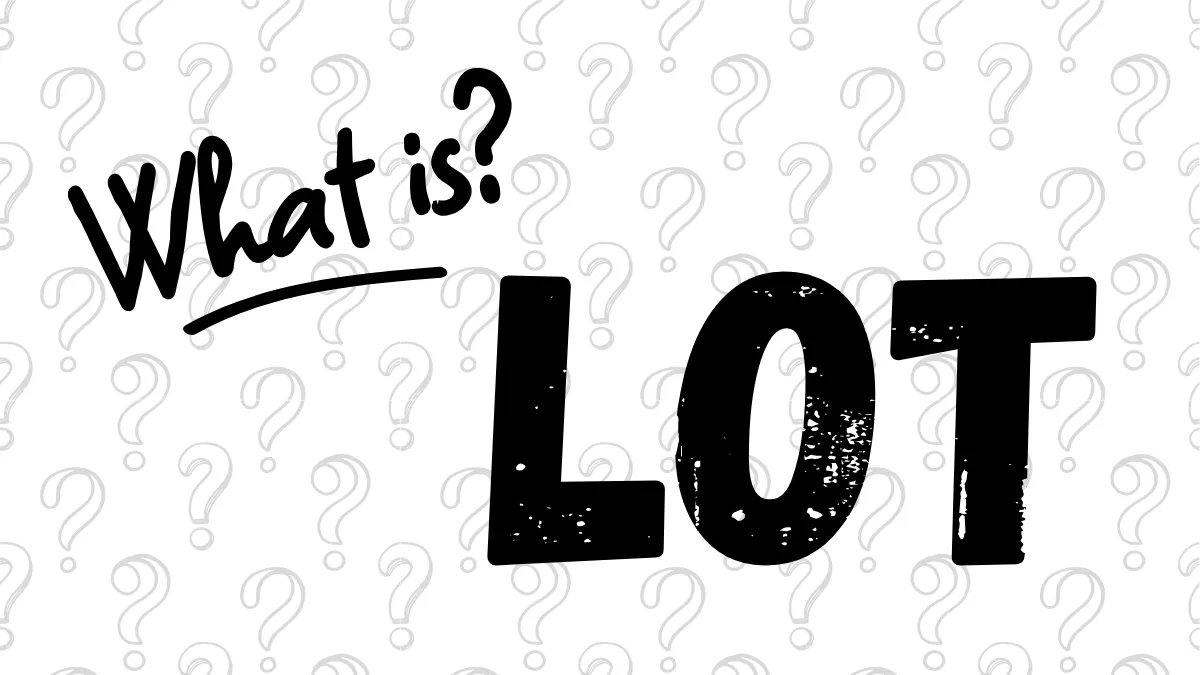What is "Lot" in Forex?
In forex trading, "Lot" refers to the amount of currency units in each trade, which is the basic unit of trading. Understanding the concept of lot size is crucial for proper position management, controlling risk, and calculating potential profits and losses. Different lot sizes allow traders to flexibly choose a trading scale that suits them.1. Definition of Lot Size:
Lot size indicates the trading volume of currency pairs in each forex trade. In the forex market, the trading volume of currency pairs is usually expressed in standard lot, which is 100,000 units of the base currency. For example, when you trade EUR / USD one standard lot, you are actually buying or selling 100,000 euros. The size of the lot directly affects the value of each pip, and in turn, affects potential profits or losses.2. Different Types of Lot Sizes:
Forex trading offers different lot sizes to meet the needs of different traders. Here are the most common types of lot sizes:Standard Lot:
Equivalent to 100,000 units of the base currency. For a standard lot, each pip movement in the currency pair is worth about 10 units of the quote currency. For example, in EUR / USD, a movement of 1 pip in a standard lot trade will gain or lose $10.
Mini Lot:
Equivalent to 10,000 units of the base currency. For a mini lot, each pip movement in the currency pair is worth about 1 unit of the quote currency. This is a great option for traders with less capital or those just starting out.
Micro Lot:
Equivalent to 1,000 units of the base currency. For a micro lot, each pip movement in the currency pair is worth about 0.1 units of the quote currency. This is an ideal choice for low-risk traders or those with limited funds.
Nano Lot:
Equivalent to 100 units of the base currency. For nano lots, the value per pip is lower, and this lot size is offered by some brokers, suitable for micro trading or strategy testing.
3. Why is Lot Size Important?
Lot size directly affects the risk and return of each trade. Choosing the appropriate lot size helps manage trades according to the trader's capital size and risk tolerance.Risk Management: A larger lot size amplifies the value of each pip, thus increasing potential profits, but at the same time, the risk also increases. Conversely, a smaller lot size reduces the value of each pip, lowering risk, which is especially important for traders with less capital.
Capital Management: Lot size is closely related to the trader's total capital. If your capital is limited, choosing a lot size that is too large can lead to overexposure to risk. Therefore, traders should choose an appropriate lot size based on their account capital to avoid rapid losses due to oversized positions.
4. The Relationship Between Pips and Lot Size:
The size of the lot is directly related to the value of each pip. Here are the impacts of different lot sizes on the value of each pip:Standard Lot: The value of a 1 pip movement is approximately $10.
Mini Lot: The value of a 1 pip movement is approximately $1.
Micro Lot: The value of a 1 pip movement is approximately $0.1.
For example, suppose you trade EUR / USD one standard lot, and the price moves from 1.1050 to 1.1070, which indicates an increase of 20 pips. If you hold a standard lot, you will gain 20 pips x $10 = $200 in profit; if you hold a mini lot, the profit will be $20.
5. How to Choose the Right Lot Size?
Choosing the right lot size depends on the following factors:Account Capital: Your trading capital size should be the main basis for choosing the lot size. If your capital is limited, choosing a mini lot or micro lot may be more suitable, as this can reduce the risk of each trade.
Risk Tolerance: Choose an appropriate lot size based on your risk preference to control the maximum risk of each trade. Generally, it is recommended that the risk of each trade should not exceed 1% to 2% of the total account capital.
Trading Strategy: Different trading strategies may require different lot sizes. Short-term day trading may require smaller lot sizes to avoid risks from market volatility, while long-term trend trading can consider larger lot sizes to increase potential returns.
6. How to Calculate Lot Size for Each Trade?
Calculating the lot size for each trade should be based on the risk you are willing to take and the market volatility. Here is a simple calculation method:Determine Risk Tolerance: Suppose your total account capital is $10,000, and you are willing to risk no more than 2%, which is $200, on a single trade.
Determine Stop Loss Range: If you plan to set a stop loss 50 pips away from the entry price, then the value per pip is $200/50 pips = $4.
Choose the Appropriate Lot Size: Based on the value per pip, you can choose about 0.4 standard lots (or 4 mini lots) to control risk.
Summary
"Lot" is the basic unit in forex trading, representing the amount of currency in each trade. Different lot sizes correspond to different risks and returns; understanding the concept of lot size can help you better manage positions, control risks, and trade effectively in the forex market. Choosing the right lot size is key to successful trading and risk management.FAQ: Frequently Asked Questions
1. What is Lot?Answer: Lot is the basic unit that represents the amount of currency in forex trading. A standard lot is typically 100,000 units of the base currency, and others include mini lot (10,000 units), micro lot (1,000 units), and nano lot (100 units).
2. How does lot size affect risk?
Answer: The larger the lot size, the higher the value of each pip movement, thus amplifying potential profits and losses. For example, a standard lot is about $10 per pip, while a mini lot is about $1 per pip.
3. How to choose the right lot size?
Answer: Choose the lot size based on the following factors:
- Account Capital: Traders with limited funds can choose mini lot or micro lot to reduce risk.
- Risk Tolerance: Control the risk of each trade to not exceed 1% to 2% of the account capital.
- Trading Strategy: Day trading is suitable for smaller lot sizes, while long-term trend trading can consider larger lot sizes.
4. What is the relationship between lot size and pips?
Answer: Lot size determines the value of each pip:
- Standard Lot: 1 pip = $10
- Mini Lot: 1 pip = $1
- Micro Lot: 1 pip = $0.1
5. How to calculate the lot size for each trade?
Answer: Calculate the lot size based on risk management principles:
- Determine the risk you are willing to take (e.g., 2% of total capital).
- Set the stop loss range (e.g., 50 pips).
- Use the formula: Value per pip = Risk amount ÷ Stop loss pips.
- Finally, choose the appropriate lot size based on the value per pip.
6. Can you still trade forex with limited funds?
Answer: Yes. Many brokers offer trading options for mini lot, micro lot, and even nano lot, allowing traders with small capital to participate in the forex market while effectively controlling risk.
Hi, We are the Mr.Forex Research Team
Trading requires not just the right mindset, but also useful tools and insights.Here, we focus on Global Broker Reviews, Trading System Setup (MT4 / MT5, EA, VPS), and Forex Trading Basics.
We personally teach you to master the "Operating Manual" of financial markets, building a professional trading environment from scratch.
If you want to move from theory to practice:
- Help share this article to let more traders see the truth.
- Read more articles on Broker Tests and Forex Education.





